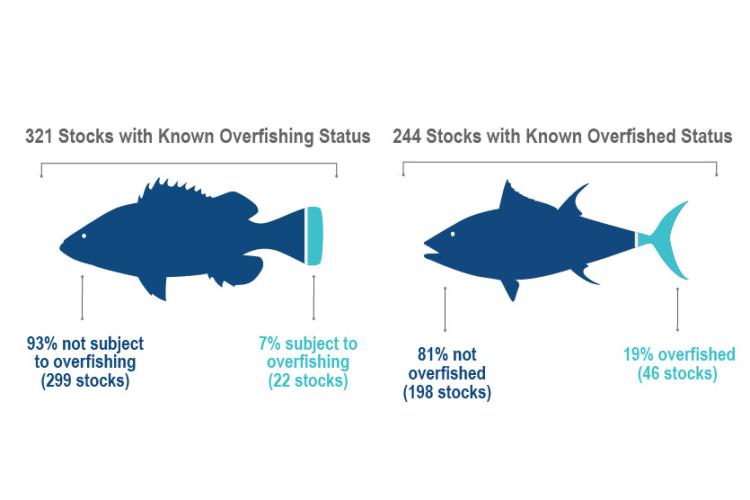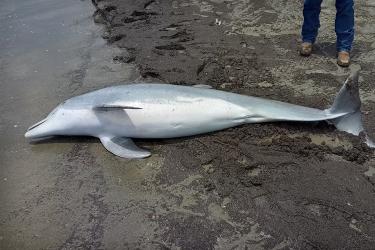Two announcements today from NOAA Fisheries offer a ‘snapshot in time’ of the population status of U.S. federal fisheries in 2019, and the economic performance of commercial fishing, recreational fishing, and related businesses in 2017. Scientists find that the vast majority of U.S. fish stocks continue to be strong, successful and achieving long-term sustainability goals. Data from these reports help governments, communities, fishery managers, and many others assess the state of the U.S. fisheries management system and plan ahead for future years.
"It's important we acknowledge the achievements in sustainable fisheries made in recent years by fishermen, industries, scientists, managers, and conservationists across our Nation. These updates are a testament to their outstanding work," said Secretary of Commerce Wilbur Ross. “To that end, President Trump has announced the availability of $300 million to support U.S. fishing communities that have been particularly hard-hit by COVID-19. The Department of Commerce stands with U.S. fishermen and coastal industries as we work to increase America’s competitiveness in the seafood industry and protect our seafood supply chain."
The 2019 Status of U.S. Fisheries Report outlines the status of 461 managed stocks or stock complexes in the U.S. to determine which stocks are subject to overfishing, are overfished, or are rebuilt to sustainable levels.
A stock is on the overfishing list when the harvest rate of that species is too high, and for 2019, scientists find that list reached a record low. Of 321 stocks for which a determination can be made, 299 (93%) are not subject to overfishing. Conversely, a stock is on the overfished list when the population size of a stock is too low. That list rose slightly in 2019; one stock was removed from the overfished list in 2019 (Gulf of Maine yellowtail flounder), but four were added. Stocks added to the list this year include ones that continue to experience poor reproduction despite closed fisheries (Pacific sardine/northern population), stocks that we now have improved scientific understanding of fishing impacts (Atlantic Coast bluefish), and stocks for which there are ongoing efforts to accurately estimate stock size (Gulf of Maine white hake and George’s Bank winter flounder).
Additionally, two once-overfished species have been rebuilt. Those stocks include American plaice, a right-eyed species of flounder native to the Gulf of Maine, and Southern California cowcod, an orangish-colored rockfish now the ninth recovered West Coast groundfish species. This brings the number of rebuilt stocks to 47 since the year 2000. Once stocks are rebuilt, expanded market opportunities often follow, as catch limits are increased.
Also available is key economic data from the 2017 Fisheries Economics of the U.S. Report, which provides an update on the economic performance of U.S. fisheries. The numbers illustrate fishing as a positive economic driver for our nation, with combined commercial and recreational fishing generating $244 billion in annual sales (up 11%), contributing $111 billion to the gross domestic product (up 8%), and supporting 1.74 million jobs (up 3.3%). The full report will be made available later this year.







